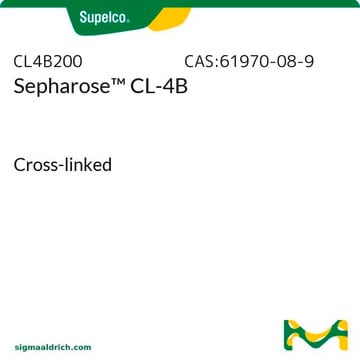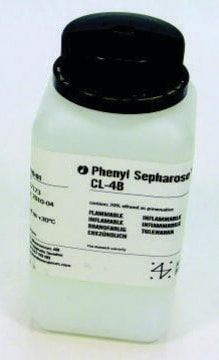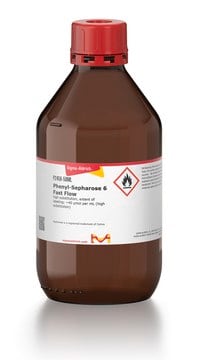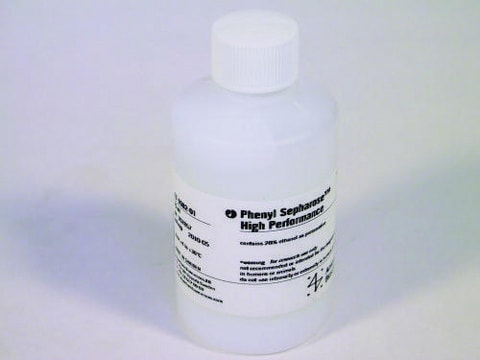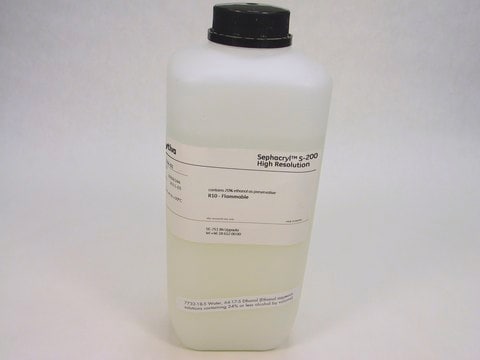P7892
Phenyl-Sepharose CL-4B
extent of labeling: ~40 μmol per mL
Synonym(s):
Phenyl-Agarose
About This Item
Recommended Products
form
suspension
extent of labeling
~40 μmol per mL
matrix
agarose, 4% cross-linked
matrix activation
epichlorohydrin
matrix attachment
hydroxyl
matrix spacer
3 atoms
particle size
45-165 μm
capacity
15-20 mg/mL binding capacity (human serum albumin)
3-5 mg/mL binding capacity (β-lactoglobulin)
storage temp.
2-8°C
Looking for similar products? Visit Product Comparison Guide
General description
Application
Physical form
Legal Information
related product
Signal Word
Warning
Hazard Statements
Precautionary Statements
Hazard Classifications
Flam. Liq. 3
Storage Class Code
3 - Flammable liquids
WGK
WGK 3
Flash Point(F)
96.8 °F
Flash Point(C)
36 °C
Certificates of Analysis (COA)
Search for Certificates of Analysis (COA) by entering the products Lot/Batch Number. Lot and Batch Numbers can be found on a product’s label following the words ‘Lot’ or ‘Batch’.
Already Own This Product?
Find documentation for the products that you have recently purchased in the Document Library.
Customers Also Viewed
Our team of scientists has experience in all areas of research including Life Science, Material Science, Chemical Synthesis, Chromatography, Analytical and many others.
Contact Technical Service